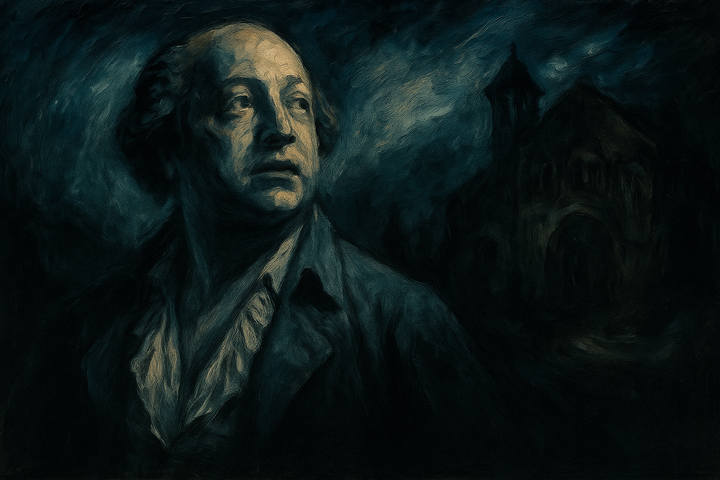The Golem: A Tale of Clay, Creation, and Caution

A Golem is an animated anthropomorphic being in Jewish folklore, entirely created from inanimate matter, usually clay or mud. The most famous Golem narrative involves Judah Loew ben Bezalel, the late 16th-century Rabbi of Prague. The Golem is a highly mutable metaphor with seemingly limitless symbolism. It can be a victim or villain, man or woman, or sometimes both. Over the centuries, it has been used to connote war, community, isolation, hope, and despair. In the modern era, the story of the Golem finds a new resonance as we grapple with the implications of artificial intelligence and the potential creation of artificial general intelligence (AGI).
The Origin of the Golem
The word Golem occurs once in the Bible, in Psalm 139:16, which uses the word "Golmi" (my Golem), that means "my light form, raw material," connoting the unfinished human being before God's eyes. The oldest stories of Golems date to early Judaism. In the Talmud, tractate Sanhedrin 38b, Adam was initially created as a Golem when his dust was kneaded into a shapeless husk. Like Adam, all Golems are created from mud by those close to divinity, but no anthropogenic Golem is fully human. Early on, the main disability of the Golem was its inability to speak.
The Golem in Jewish Mysticism and Kabbalah
The Jewish mystical tradition of Kabbalah provides instructions for the creation of unnatural life. This being is called a "Golem," typically made of clay and brought to life using Kabbalistic magic. However, tales such as the Golem of Prague and the Golem of Chelm show a darker side to this practice. Just like its mortal creator, the Golem is flawed.
The Golem of Prague
The most famous Golem narrative involves Judah Loew ben Bezalel, the late 16th-century Rabbi of Prague, also known as the Maharal, who reportedly created a Golem out of clay from the banks of the Vltava River and brought it to life through rituals and Hebrew incantations to defend the Prague ghetto from antisemitic attacks and pogroms. This creature, named Yosef, looked around and moved slowly, acting confused and childlike. Rabbi Loewy immediately informed him of his purpose to protect the Jews of Prague. Over the next decade, Yosef would act as a bodyguard for the Jewish people. During the day, he would labor in the Old New Synagogue, making use of his superhuman strength. But after dark, Yosef would dress up as a Christian and spy in the Christian quarters of the city.
The Golem's Demise and Legacy
Unfortunately, the Golem's existence was not a peaceful one. One Friday evening, Rabbi Loewy forgot to remove the parchment from Yosef, and on the morning of the Sabbath, the Golem seemingly lost its mind. Yosef struck out on a violent rampage through the entire Jewish quarter, destroying buildings and terrorizing the people. Loewy quickly realized what a horrible mistake he had made and somehow was able to corner his unruly creation in front of the Old New Synagogue and rip out the Shem parchment from under his tongue. The Golem immediately fell to pieces.

The Golem in Poland
Though the Golem of Prague is without a doubt the most famous Golem tale, there is actually an older and perhaps stranger legend of a Golem in Poland, a country where there is a very long tradition of Golems being created, which some there consider to be real history. One of the earliest and most descriptive written accounts of Polish Golems actually comes from a non-Jewish writer named Christoph Arnold in 1674. He wrote:
"After saying certain prayers and holding certain feast days, they make the figure of a man from clay, and when they have said the Shem HaMephorash, the explicit and unmentionable name of God, over it, the image comes to life and, although the image itself cannot speak, it understands what is being said to it and commanded of it. Among the Polish Jews, it does all kinds of housework but is not allowed to leave the house. The figure of this kind grows each day, though very small at first, it ends by becoming larger than those in the house. In order to take away his strength, which ultimately becomes a threat to those in the house, they quickly erase the first letter from the word Emet on his forehead."
Arnold provides a very strange detail in Golem folklore. As we can see from this early account, the Golem doesn't just exist as it is as a soulless being but has a fatal flaw of ever-growing size and strength. This is a key element in the Golem's story, showing that even a creature created for protection can become a threat if not properly controlled.

The Golem and Artificial Intelligence
In the modern era, the story of the Golem finds a new resonance as we grapple with the implications of artificial intelligence and the potential creation of artificial general intelligence (AGI). Just as the Golem was created by human hands and brought to life through mystical rituals, AGI is being created by human minds and brought to life through complex algorithms and computational power. And just as the Golem was created to serve and protect but had the potential to become a threat, so too does AGI have the potential to become a threat if not properly controlled.
The story of the Golem serves as a cautionary tale for our modern endeavors. It reminds us of the responsibility that comes with creation, the importance of setting boundaries, and the potential consequences when those boundaries are crossed. As we continue to push the boundaries of artificial intelligence, the story of the Golem serves as a potent reminder of the potential dangers that come with the power of creation.
The Golem is a fascinating symbol in Jewish folklore, representing the power and potential danger of creation. Whether seen as a protector or a potential threat, the Golem's story continues to captivate audiences, serving as a potent metaphor for the human condition. The Golem's story reflects societal attitudes towards the unknown and the unnatural. It also raises questions about the human desire to create and protect, and the potential dangers that come with it. The Golem's ever-growing size and strength symbolize the potential for creations to grow beyond our control, a cautionary tale that resonates in our modern world of technological advancements.




